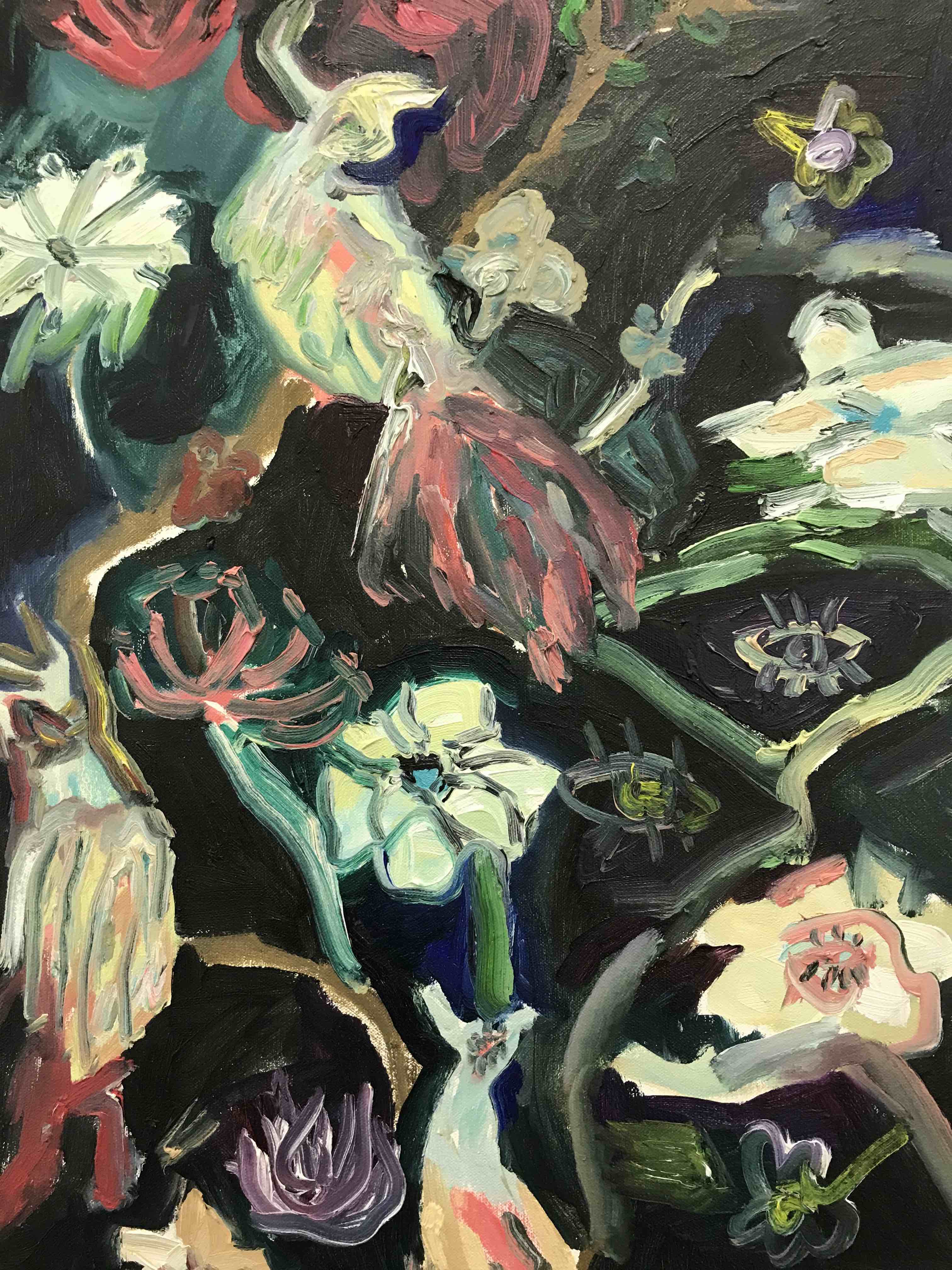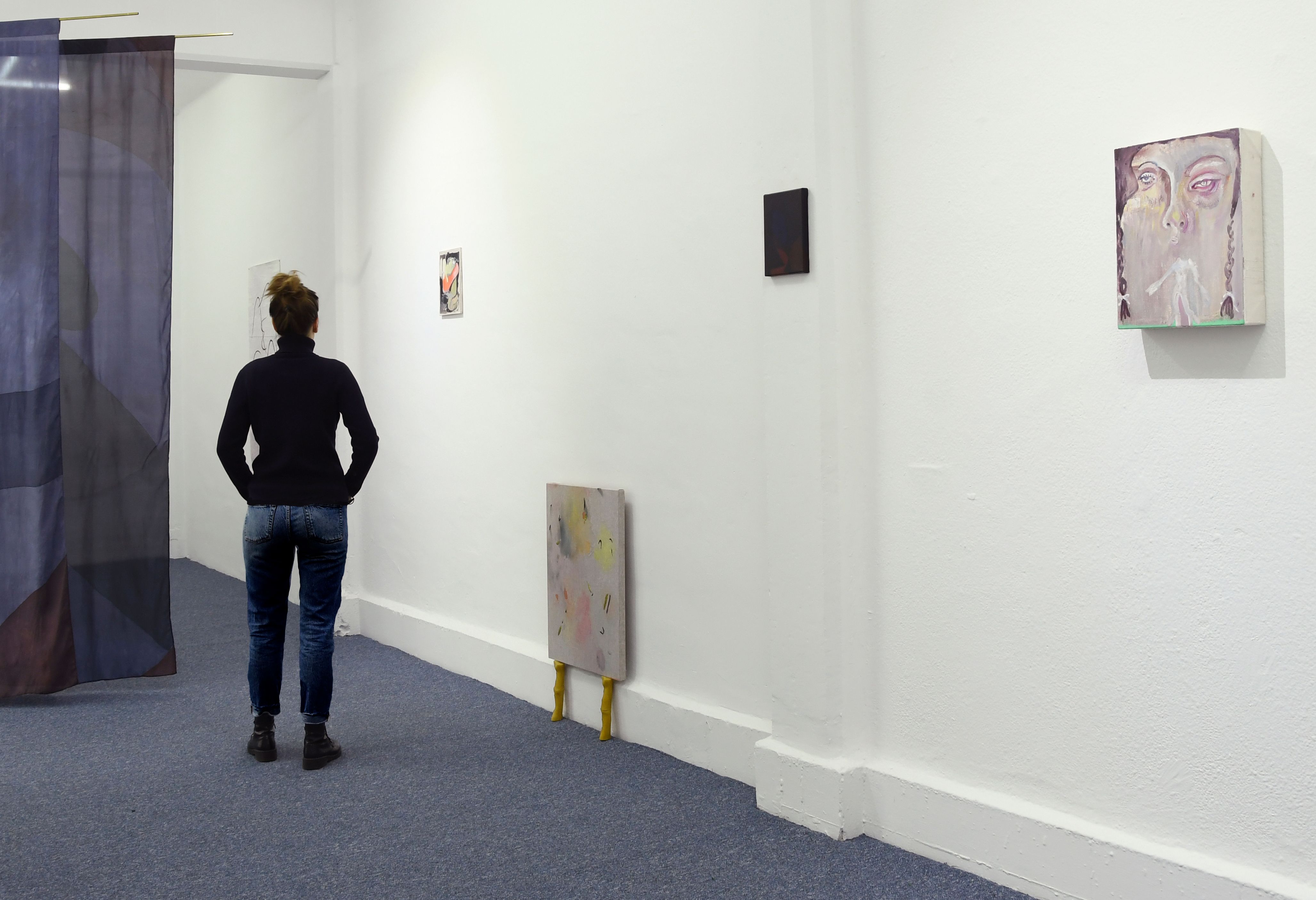
Review
Bailando en la oscuridad: What We Do When Looking Inward?
by Antonia Alarcón
At Galería Karen Huber
Reading time
4 min
There exists a series of visual phenomena accompanying everyday life and coloring domestic frames in the most abnormal ways. Rarely—if ever—can I remember the name of those floating entities living in my eyes, whose irregular shapes I can see only with a lot of light or, in their opposite version, the absence of light: the black vision filled with spots that overlap, grow, disappear. A darkness that turns orange, green, blue, all at the same time, all at its own pace.
From the moment we enter the room, we know the space by our feet. Surprise, a carpet that’s a house! A room, a closet, a shelter. I find an altar on the floor, the memory of ritual, of the little miracles (the dismembered body) in churches. The exhibition Bailando en la oscuridad (“Dancing in the Dark”), curated by Aurélie Vandewynckele at Galería Karen Huber, is a stroll through the hidden memory of the body/room in which spaces inhabit us and the room has its own breath. Through the works of artists Verónica Bapé, Nicole Chaput, Tahanny Lee Betancourt, Gabriel Rosas Alemán, and Alejandra Venegas, a poetic narrative—uncomfortable, captivating, and meditative—is constructed.

Each work operates within its own rules, producing a journey that is cacophonic in the best sense, one in which each piece is experienced in its own tone. Each artist’s voice seems to sing different intimacies, what Aurélie calls “plurivoices of inhabiting” (“plurivoces del habitar”). Through them we experience different intensities of darkness: from the playful and the erotic, through contemplation, to explosive bodily intensity. Spaces devoid of light become canvases in which we pour our imagination over the unrecognizable, in the small vibration of pigments before the eyes.


The static and enclosed body easily leads us to a bad trip. Nicole Chaput’s painting is visceral: with her flesh stroke: dagger brush: the pit dug over the body/canvas. Meanwhile, Alejandra Venegas creates a window in a room for contemplating a nocturnal landscape, consisting of those moments of deciphering the exterior based on the suggestion of forms. For her part, Tahanny Lee Betancourt creates an allegory of the body as room, as if pregnancy were an architectural transformation and motherhood a ritual reflected in its corners. Verónica Bapé represents the sunset as the intermediate space of energies, both luminous and human. The light textile pieces by Gabriel Rosas Alemán manage to respond to any kind of presence, thus making evident the passage of bodies and the invisible movements that occur in these spaces. The pieces are interwoven, demanding the visitor’s attention, enveloping them in the latent narrative, like a whisper.

One of the pandemic benefits was being able to tour the exhibition, narrated in the voice of Aurélie, who is in a constant dialogue with the works, based on her own intimacy: on her everyday readings and personal experiences. One of the reasons for my captivation with this exhibition was the generosity with which it shared her initial concerns and her wisdom. Her curation is sensitive, vulnerable, and affective, the same reasons for why the exhibition feels like a bunch of familiar spaces. I think that in Mexico there aren’t too many houses carpeted wall-to-wall; Aurélie and I have a common memory of other latitudes that only migration allows us to share, and this was something revived in that very room.
Dance might not always be something musical; sometimes it’s a coordination of displacements. This exhibition alludes to darkness in the least obvious ways, through memory and through what exists in intimate spaces: the bodily sensations, the movements of the canvases, the padding under the feet. Thus it becomes evident that it’s not necessary to turn out the light when memory is the darkest space.
The exhibition can be viewed until January 30, 2021. Make your appointment here.
Translated to English by Byron Davies.
Cover picture: Nicole Chaput, My Grandma's Wallpaper (detail), 2018. Courtesy of Galería Karen Huber
Published on December 10 2020